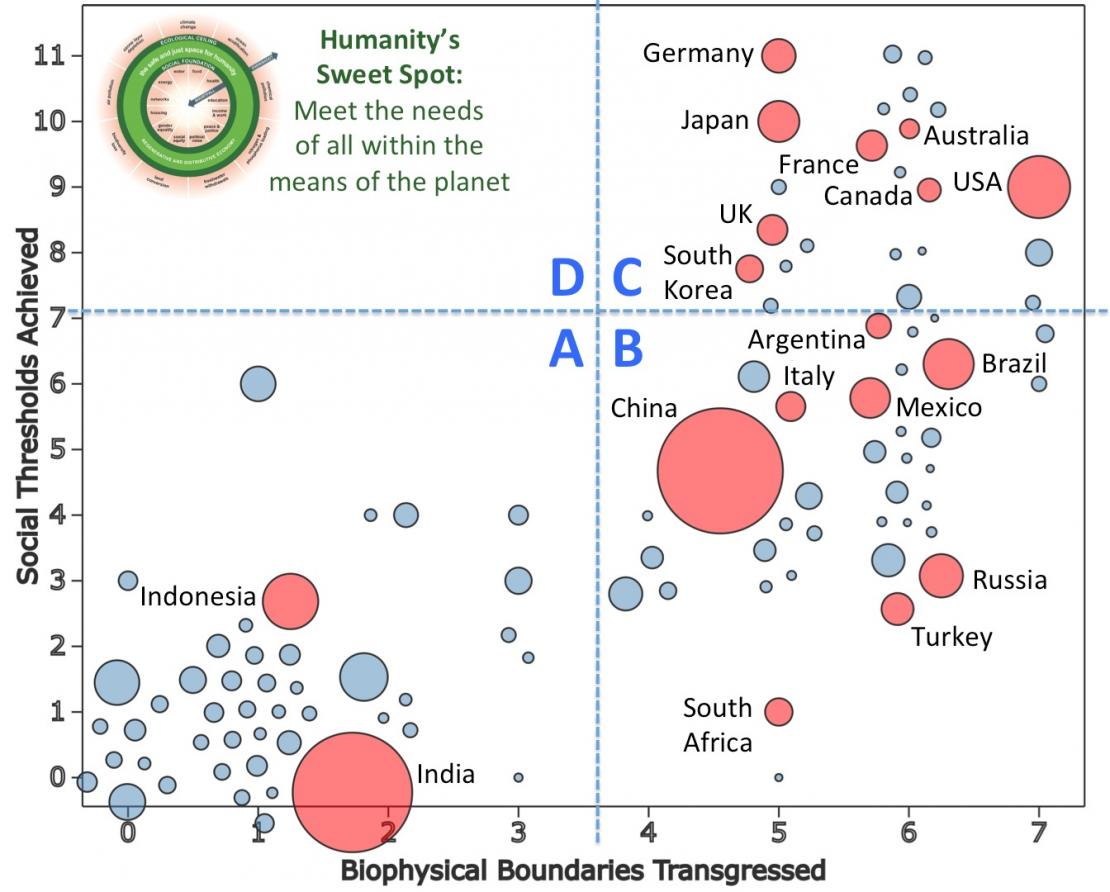The last 70 years have shown a significant GDP growth/per capita and millions have been taken out of complete poverty. But, at the same time, there is strong evidence that the rates at which we are utilizing nature and environment in all its forms are unsustainable – science has provided us undeniable facts and data. Which means that economic growth has been achieved at the expense of the Planet, the natural capital that will not be there for us anymore. GDP has been the 20th-century metric to measure wellbeing – a reliable measure to value the economy’s stock of manufactured capital but without any sort of consideration to the human capital and natural capital.
Kate Raworth is an economist whose research focus on the social and environmental challenges of the 21st century, teaches at Oxford University and is the author of the book “Doughnut Economics: Seven Ways to Think like a Twenty-first Century Economist”. The book provides a framework (“The Doughnuts”) whose basic idea is that we need to learn how to live “within the doughnut” (the safe and just space for humanity) in which the inner circle represents the social foundation of wellbeing that no one should fall behind, and the outer circle represents the ecological ceiling of planetary pressure that we should not go beyond.

Simply put, the doughnut is a way of thinking about economics based on the priorities set out by the United Nations Sustainable Development Goals.
Based on this framework, Raworth conducted a study analysing a country’s economy to determine the extent to which it is sustainable. “In essence, national doughnuts aim to reflect the extent to which a country is meeting its people’s essential needs while at the same time ensuring that its use of Earth’s resources remains within its share of the planet’s biophysical boundaries.”
Using the best-available, internationally comparable data, the study scaled the global concept of the Doughnut down to the national level for over 150 countries. The methodology for these national doughnuts is a work in progress, of course, but the indicators and data underlying them are improving year-on-year, and when taken as an overview of 150 countries, the initial analysis reveals some valuable 21st century insights.
The results plot the countries in terms of how they are performing relative to the theoretical doughnut. You can see the graphical representation of this here:

The graphic has four quadrants: A. Countries that are barely crossing any planetary boundaries, but are falling far short on meeting people’s needs; B. Countries falling short both on social needs while already crossing biophysical boundaries; C. Countries that have resolved most social issues but greatly overshooting Earth’s boundaries and (where most of the G20 are); D. the so-called “sweet-spot” where social issues are solved not at the expense of the Planet.
Conclusion: no country has achieved the “sweet spot”. In light of this, Raworth asks whether it is possible for any country to get there (“how many years until some are there, and which will make there first”).
Covid19 crisis must be seen as a fantastic opportunity to reimagine the way we should live and move all countries to the sweet spot.
Have a great and impactful week!
Nuno Moreira da Cruz
Executive Director
Center for Responsible Business & Leadership
Católica Lisbon School of Business and Economics
This article refers to edition #38 of the "Have a Great and Impactful Week" Newsletter.
Subscribe here to receive the weekly newsletter